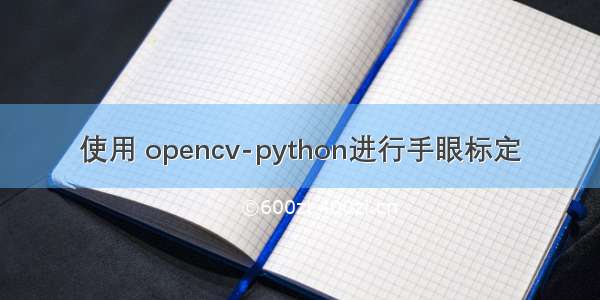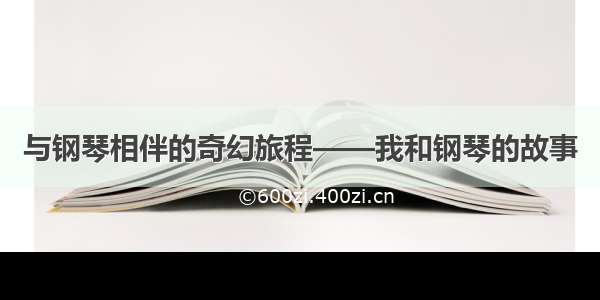
手眼标定整体流程及原理参考b站视频手眼标定-原理与实战,讲的十分详细。
这里完成的是eye-in-hand类型的手眼标定。
import cv2import numpy as npimport globfrom math import *import pandas as pdimport osK=np.array([[4283.95148301687,-0.687179973528103,2070.79900757240],[0,4283.71915784510,1514.87274457919],[0,0,1]],dtype=np.float64)#大恒相机内参chess_board_x_num=11#棋盘格x方向格子数chess_board_y_num=8#棋盘格y方向格子数chess_board_len=10#单位棋盘格长度,mm#用于根据欧拉角计算旋转矩阵def myRPY2R_robot(x, y, z):Rx = np.array([[1, 0, 0], [0, cos(x), -sin(x)], [0, sin(x), cos(x)]])Ry = np.array([[cos(y), 0, sin(y)], [0, 1, 0], [-sin(y), 0, cos(y)]])Rz = np.array([[cos(z), -sin(z), 0], [sin(z), cos(z), 0], [0, 0, 1]])R = Rz@Ry@Rxreturn R#用于根据位姿计算变换矩阵def pose_robot(x, y, z, Tx, Ty, Tz):thetaX = x / 180 * pithetaY = y / 180 * pithetaZ = z / 180 * piR = myRPY2R_robot(thetaX, thetaY, thetaZ)t = np.array([[Tx], [Ty], [Tz]])RT1 = np.column_stack([R, t]) # 列合并RT1 = np.row_stack((RT1, np.array([0,0,0,1])))# RT1=np.linalg.inv(RT1)return RT1#用来从棋盘格图片得到相机外参def get_RT_from_chessboard(img_path,chess_board_x_num,chess_board_y_num,K,chess_board_len):''':param img_path: 读取图片路径:param chess_board_x_num: 棋盘格x方向格子数:param chess_board_y_num: 棋盘格y方向格子数:param K: 相机内参:param chess_board_len: 单位棋盘格长度,mm:return: 相机外参'''img=cv2.imread(img_path)gray = cv2.cvtColor(img, cv2.COLOR_BGR2GRAY)size = gray.shape[::-1]ret, corners = cv2.findChessboardCorners(gray, (chess_board_x_num, chess_board_y_num), None)# print(corners)corner_points=np.zeros((2,corners.shape[0]),dtype=np.float64)for i in range(corners.shape[0]):corner_points[:,i]=corners[i,0,:]# print(corner_points)object_points=np.zeros((3,chess_board_x_num*chess_board_y_num),dtype=np.float64)flag=0for i in range(chess_board_y_num):for j in range(chess_board_x_num):object_points[:2,flag]=np.array([(11-j-1)*chess_board_len,(8-i-1)*chess_board_len])flag+=1# print(object_points)retval,rvec,tvec = cv2.solvePnP(object_points.T,corner_points.T, K, distCoeffs=None)# print(rvec.reshape((1,3)))# RT=np.column_stack((rvec,tvec))RT=np.column_stack(((cv2.Rodrigues(rvec))[0],tvec))RT = np.row_stack((RT, np.array([0, 0, 0, 1])))# RT=pose(rvec[0,0],rvec[1,0],rvec[2,0],tvec[0,0],tvec[1,0],tvec[2,0])# print(RT)# print(retval, rvec, tvec)# print(RT)# print('')return RTfolder = r"calib"#棋盘格图片存放文件夹# files = os.listdir(folder)# file_num=len(files)# RT_all=np.zeros((4,4,file_num))# print(get_RT_from_chessboard('calib/2.bmp', chess_board_x_num, chess_board_y_num, K, chess_board_len))'''这个地方很奇怪的特点,有些棋盘格点检测得出来,有些检测不了,可以通过函数get_RT_from_chessboard的运行时间来判断'''good_picture=[1,3,5,6,7,8,10,11,12,13,14,15]#存放可以检测出棋盘格角点的图片# good_picture=[1,3,10,11,12]file_num=len(good_picture)#计算board to cam 变换矩阵R_all_chess_to_cam_1=[]T_all_chess_to_cam_1=[]for i in good_picture:# print(i)image_path=folder+'/'+str(i)+'.bmp'RT=get_RT_from_chessboard(image_path, chess_board_x_num, chess_board_y_num, K, chess_board_len)# RT=np.linalg.inv(RT)R_all_chess_to_cam_1.append(RT[:3,:3])T_all_chess_to_cam_1.append(RT[:3, 3].reshape((3,1)))# print(T_all_chess_to_cam.shape)#计算end to base变换矩阵file_address='calib/机器人基坐标位姿.xlsx'#从记录文件读取机器人六个位姿sheet_1 = pd.read_excel(file_address)R_all_end_to_base_1=[]T_all_end_to_base_1=[]# print(sheet_1.iloc[0]['ax'])for i in good_picture:# print(sheet_1.iloc[i-1]['ax'],sheet_1.iloc[i-1]['ay'],sheet_1.iloc[i-1]['az'],sheet_1.iloc[i-1]['dx'],#sheet_1.iloc[i-1]['dy'],sheet_1.iloc[i-1]['dz'])RT=pose_robot(sheet_1.iloc[i-1]['ax'],sheet_1.iloc[i-1]['ay'],sheet_1.iloc[i-1]['az'],sheet_1.iloc[i-1]['dx'],sheet_1.iloc[i-1]['dy'],sheet_1.iloc[i-1]['dz'])# RT=np.column_stack(((cv2.Rodrigues(np.array([[sheet_1.iloc[i-1]['ax']],[sheet_1.iloc[i-1]['ay']],[sheet_1.iloc[i-1]['az']]])))[0],#np.array([[sheet_1.iloc[i-1]['dx']],#[sheet_1.iloc[i-1]['dy']],[sheet_1.iloc[i-1]['dz']]])))# RT = np.row_stack((RT, np.array([0, 0, 0, 1])))# RT = np.linalg.inv(RT)R_all_end_to_base_1.append(RT[:3, :3])T_all_end_to_base_1.append(RT[:3, 3].reshape((3, 1)))# print(R_all_end_to_base_1)R,T=cv2.calibrateHandEye(R_all_end_to_base_1,T_all_end_to_base_1,R_all_chess_to_cam_1,T_all_chess_to_cam_1)#手眼标定RT=np.column_stack((R,T))RT = np.row_stack((RT, np.array([0, 0, 0, 1])))#即为cam to end变换矩阵print('相机相对于末端的变换矩阵为:')print(RT)#结果验证,原则上来说,每次结果相差较小for i in range(len(good_picture)):RT_end_to_base=np.column_stack((R_all_end_to_base_1[i],T_all_end_to_base_1[i]))RT_end_to_base=np.row_stack((RT_end_to_base,np.array([0,0,0,1])))# print(RT_end_to_base)RT_chess_to_cam=np.column_stack((R_all_chess_to_cam_1[i],T_all_chess_to_cam_1[i]))RT_chess_to_cam=np.row_stack((RT_chess_to_cam,np.array([0,0,0,1])))# print(RT_chess_to_cam)RT_cam_to_end=np.column_stack((R,T))RT_cam_to_end=np.row_stack((RT_cam_to_end,np.array([0,0,0,1])))# print(RT_cam_to_end)RT_chess_to_base=RT_end_to_base@RT_cam_to_end@RT_chess_to_cam#即为固定的棋盘格相对于机器人基坐标系位姿RT_chess_to_base=np.linalg.inv(RT_chess_to_base)print('第',i,'次')print(RT_chess_to_base[:3,:])print('')
opencv-python参考文档里面关于这一块资料较少,函数的输入条件也试了好半天才试明白,归根结底还是要懂这个eye-in-hand的原理。
















